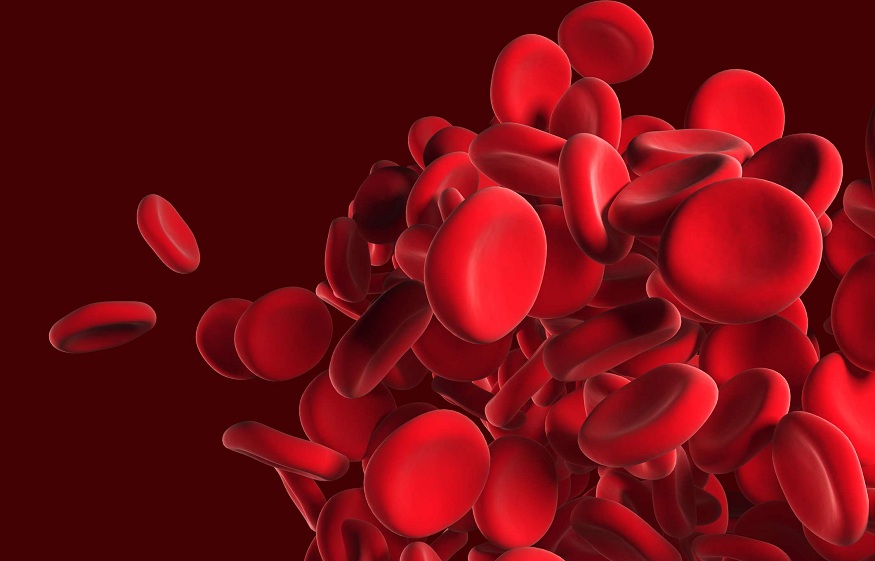If the levels of platelets in the blood are abnormally low, we can have health problems and, in severe cases, suffer spontaneous bleeding. Find out why platelets drop and how to avoid it.
The platelets or thrombocytes are cells produced by the bone marrow and play an essential role in blood clotting. If their levels are abnormally low (less than 150 000 mm3) – what is known as thrombocytopenia – may suffer bleeding Internal injuries and wounds are more difficult to heal.
The average platelet values should be between 150,000 and 400,000 mm3. A platelet count below 50,000 mm3 can be dangerous to health because it increases the risk of bleeding after minor trauma, and if it is between 10,000 and 20,000 mm3, it can even lead to spontaneous bleeding.
Why do platelets go down
The low platelet count in the blood may be due to lower production of these cells in the bone marrow, or to more significant destruction or use of them in the body, due to any of these causes :
- Having certain diseases such as aplastic anemia, leukemia, cirrhosis, myelodysplastic syndrome (which causes the bone marrow not to produce enough blood cells or to produce defective blood cells),
- A severe bacterial infection, certain viral infections ( mononucleosis, hepatitis C, HIV, dengue), or autoimmune diseases such as lupus or rheumatoid arthritis.
- Have hemolytic uremic syndrome (HUS), a sporadic disorder and generally associated with an E. coli infection, which also causes a significant decrease in platelets and the destruction of red blood cells alteration in kidney functions.
- Suffer purpura idiopathic thrombocytopenic purpura (ITP), which is the leading cause of platelet destruction in infants and children. Because the immune system antibodies against platelets, which results in the spleen, consider these cells are agents foreign and destroy them -, or thrombotic thrombocytopenic purpura. Large amounts of platelets are destined to produce small blood clots that are distributed throughout the body.
- Have a deficiency of folic acid or vitamin B12.
- Follow chemotherapy treatment, one of the side effects of reducing platelets’ production in the bone marrow.
- Regularly take certain drugs such as aspirin or anti-inflammatories, or others used to treat heart problems, among others.
- Excessive consumption of alcohol.
- Present splenomegaly or pathological enlargement of the spleen, which hinders the circulation of platelets.
- During pregnancy, about 5% of healthy women may experience mild thrombocytopenia – gestational thrombocytopenia – which usually disappears after giving birth.
Thrombocytopenia Symptoms: How to Know If You Have Low Platelets
Thrombocytopenia may not show any symptoms, but the main signs that can alert you that platelet levels are lower than usual are:
- Bleeding for no reason from the nose, mouth, or gums.
- Presence of blood in urine or feces.
- That the bleeding does not stop in a short time when we make a minor wound.
- Hematomas or bruises on the skin are also frequent, although we have not given ourselves any blow that justifies it.
- Small reddish or purple spots appear throughout the body called petechiae.
Women also can present severe bleeding during menstruation, so those who have periods characterized by very heavy bleeding should consult their doctor to rule out a possible bleeding disorder.
Diagnosis and treatment of thrombocytopenia
Thrombocytopenia is usually diagnosed when a patient undergoes a blood test for any reason, and their platelet levels are found to be lower than usual. The complete blood count (CBC) also provides information on other blood components, such as red and white blood cells, which are also necessary for testing to determine what causes low platelets.
One does not usually require mild treatment thrombocytopenia and may disappear spontaneously. Still, it is essential to know why platelet levels are low and identify and address the causes that help avoid this problem. For example, if the consumption of drugs induces it, they must be replaced by others that do not have this side effect. If the reason is a deficiency of vitamins B9 or B12, it may be necessary to take vitamin supplements.
If the patient suffers from idiopathic autoimmune thrombocytopenia, corticosteroids are administered because they decrease the body’s inflammatory response and block the antibodies generated against platelets. When the platelet level is shallow and treatment is ineffective, removing the spleen may be indicated in severe cases.
If platelet levels are low due to infection or another disease, proper treatment will correct the disorder.
How to maintain adequate platelet levels
As we have seen, several diseases cause platelet levels to decrease. Still, we can do something to prevent thrombocytopenia by leading a healthy lifestyle and avoiding the consumption of alcohol or medications that the doctor has not prescribed.
Also, it will help us to maintain adequate platelet levels to include in the diet some foods that provide folic acid and other vitamins and minerals that are very beneficial for health, such as:
- Green leafy vegetables such as spinach, lettuce, turnip greens, cabbages, and legumes such as beans and lima beans (rich in folic acid).
- Milk, yogurts, and other dairy products (due to their high calcium content ).
- Nuts (which provide healthy fats).
- Fish and lean meats (because they contain zinc and vitamin B12, and their proteins help raise platelets).

